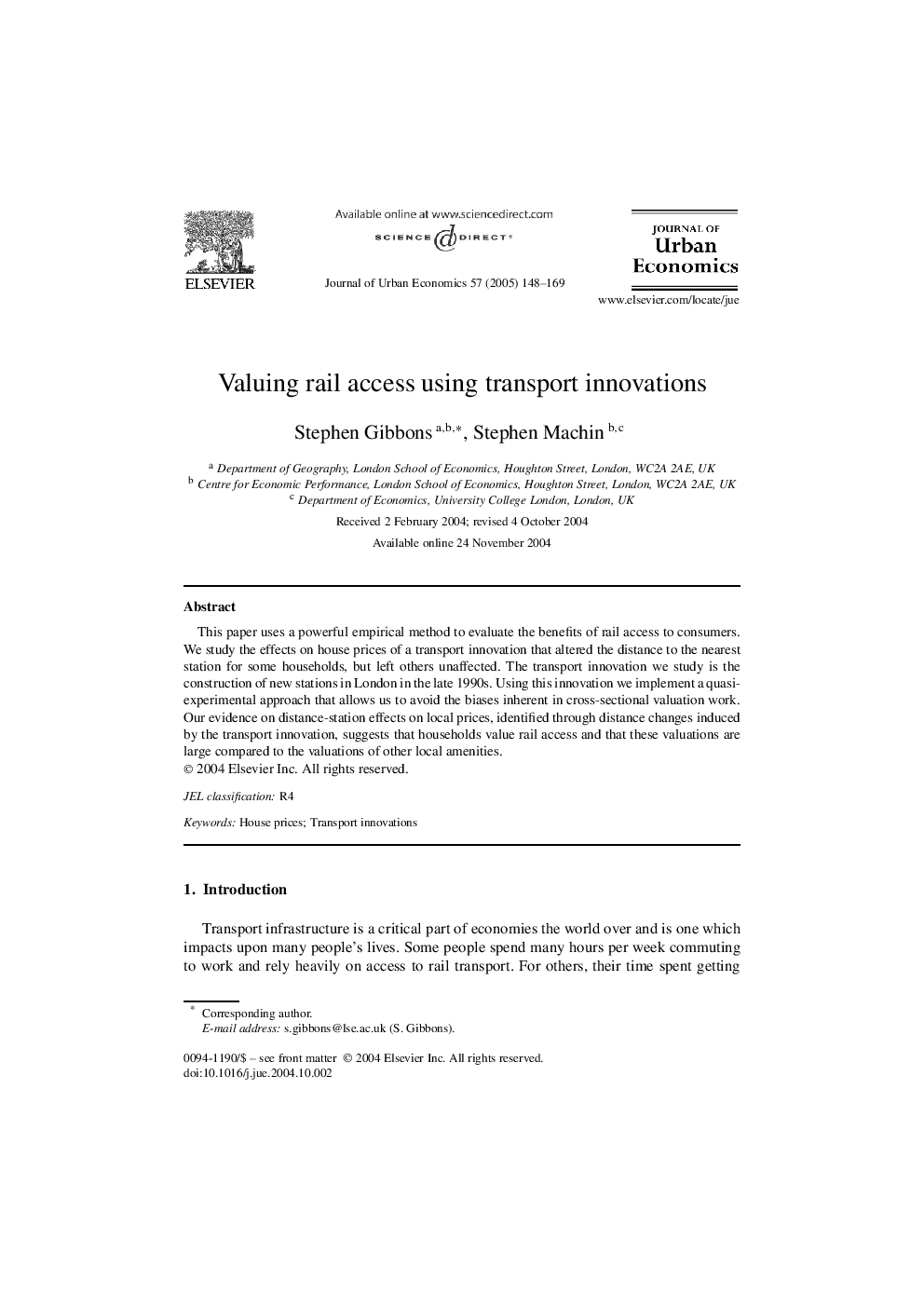| Article ID | Journal | Published Year | Pages | File Type |
|---|---|---|---|---|
| 10479790 | Journal of Urban Economics | 2005 | 22 Pages |
Abstract
This paper uses a powerful empirical method to evaluate the benefits of rail access to consumers. We study the effects on house prices of a transport innovation that altered the distance to the nearest station for some households, but left others unaffected. The transport innovation we study is the construction of new stations in London in the late 1990s. Using this innovation we implement a quasi-experimental approach that allows us to avoid the biases inherent in cross-sectional valuation work. Our evidence on distance-station effects on local prices, identified through distance changes induced by the transport innovation, suggests that households value rail access and that these valuations are large compared to the valuations of other local amenities.
Keywords
Related Topics
Social Sciences and Humanities
Economics, Econometrics and Finance
Economics and Econometrics
Authors
Stephen Gibbons, Stephen Machin,
